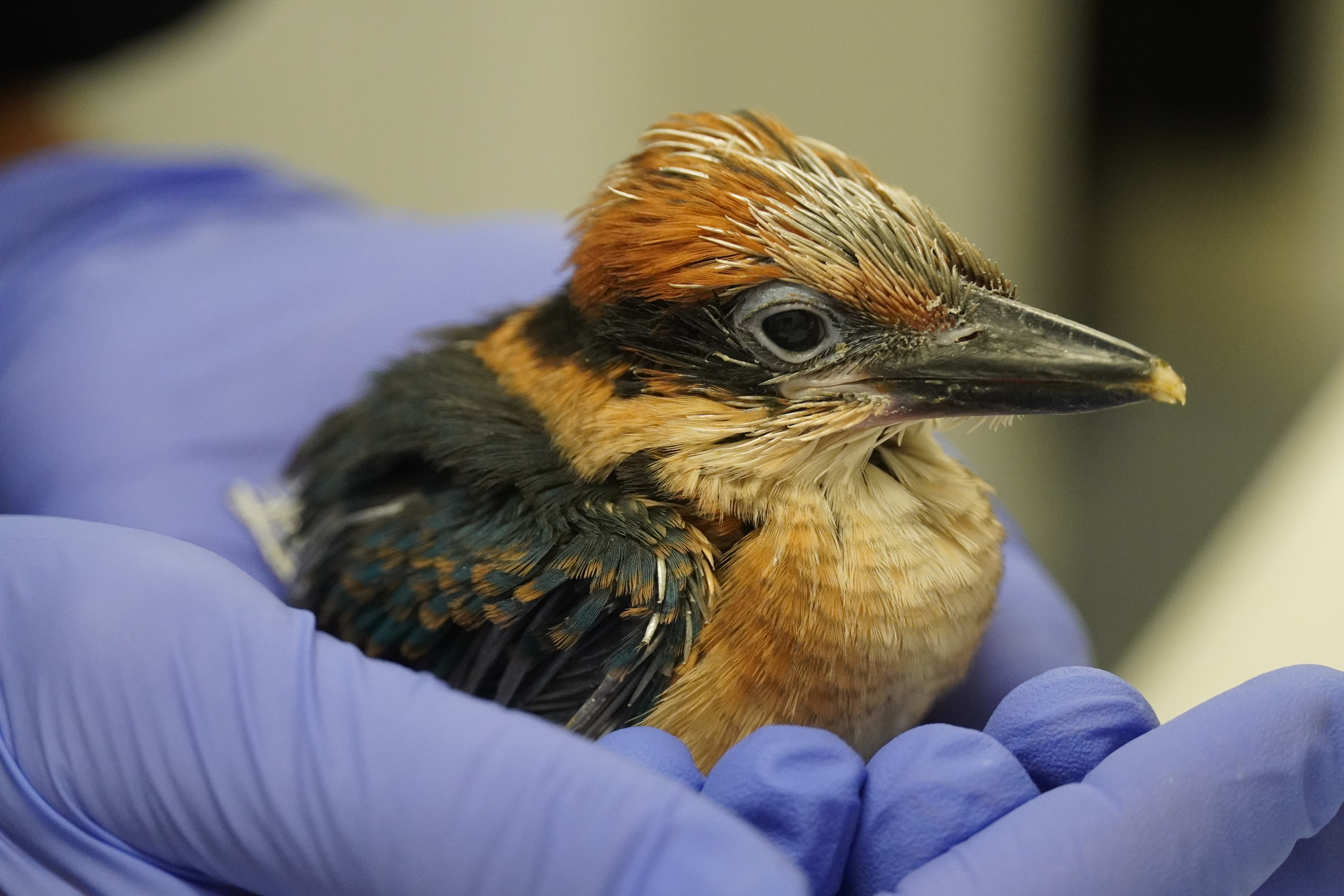Near-extinct and ‘extremely precious’ kingfishers to be released into the wild
The project by Zoological Society of London hopes to bring the threatened birds back into the wild on the Pacific island of Guam.

Your support helps us to tell the story
From reproductive rights to climate change to Big Tech, The Independent is on the ground when the story is developing. Whether it's investigating the financials of Elon Musk's pro-Trump PAC or producing our latest documentary, 'The A Word', which shines a light on the American women fighting for reproductive rights, we know how important it is to parse out the facts from the messaging.
At such a critical moment in US history, we need reporters on the ground. Your donation allows us to keep sending journalists to speak to both sides of the story.
The Independent is trusted by Americans across the entire political spectrum. And unlike many other quality news outlets, we choose not to lock Americans out of our reporting and analysis with paywalls. We believe quality journalism should be available to everyone, paid for by those who can afford it.
Your support makes all the difference.Four “extremely precious” kingfisher hatchlings from a species that is nearing extinction are to be released into the wild next year with the help of a British zookeeper.
Bird keeper Claire McSweeney at Whipsnade Zoo in Dunstable was taken to Sedgwick County Zoo in Kansas, US, as part of the Zoological Society of London’s (ZSL) sihek recovery project to help specialists hand rear the Guam kingfishers – which are classed as extinct in the wild.
A day after Ms McSweeney landed in America in June, the eggs began to hatch and she has since been caring for the chicks “around the clock”.
“I flew to America in early June and the next day the eggs started to hatch – since then it’s been go, go, go,” she said.
“We’ve been caring for the rare chicks around the clock, feeding, monitoring and weighing them to ensure they’re in the best of health.”
Ms McSweeney described the birds as “extremely precious” as there are said to be less than 150 wild Guam kingfishers in the world today.
“Apart from these four, fluffy, brown chicks, there are only 137 Guam kingfishers or sihek, as they are known to the Chamoru people, in the whole world,” she said.
“These little hatchlings are extremely precious as ZSL and its partners work towards growing the population and introducing sihek back into the wild.”
The kingfishers are endemic to Guam, a small US territory located in the Pacific ocean, and are known for their dusty, orange feathers and striking blue wings.
The birds were classified as extinct in the wild in 1988 following the accidental introduction of brown tree snakes 40 years prior, significantly reducing the number of sihek on the island.
Efforts are underway to reduce the spread of the brown tree snakes, but their population on Guam have have grown to more than two million, and now the threatened birds remain in the care of humans.
The sihek recovery project hopes to release nine chicks onto Palmyra Atoll, an island just south of Hawaii, next year.
It will repeat this annually until 20 siheks establish as breeding pairs in a bid to raise the first wild-born sihek chicks since the 1980s.
John Ewen, senior research fellow at ZSL’s Institute of Zoology and sihek recovery team chair, said conservation is vital to “grow the bird’s population” and see the threatened species “flourish”.
“Without conservation zoos, species like the sihek wouldn’t exist,” he said.
“In the 1980s there were only a handful of sihek left in the world, now, thanks to expertise from zookeepers like Claire, there are 137 across the United States.”
“Our goal is to continue to grow the bird’s population and introduce the sihek into a predator-free zone next year on the fully protected Palmyra Atoll – a temporary home where they can flourish in the wild before their hopeful return to a snake-free Guam.”
Ms McSweeney has closely monitored the chicks to ensure they have “the strongest possible start” to their new lives in the wild.
“The chicks, which currently weigh around 50g, are enjoying a nutritious diet of mice, but in the forests of Palmyra Atoll they will have to learn to hunt and forage for everything from insects to geckos,” she explained.
“We’re training them to associate feeding time with a whistle, so that if they struggle settling in, our team on the ground can blow a whistle and the birds will know where to go to find food.
“We want to make sure they have the strongest possible start to their new lives and can flourish in their wild homes – preparations start now.”